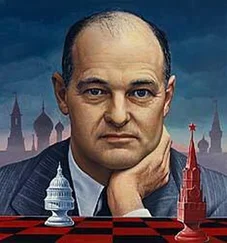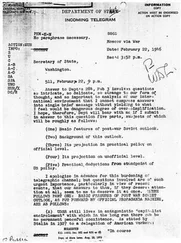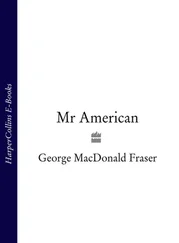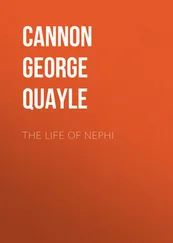So too was Florence’s family, the Jameses, with whom George spent a great deal of time. “They were socially elite, which the Kennans weren’t,” Jeanette observed. Their wealth came from the insurance business: Florence’s father and brother both served as presidents of the Northwestern National Life Insurance Company. “They were not at all like my father’s family,” George commented. “They had none of the intellectual ability that my father obviously had. They were tough, handsome, but not intellectual.” 25
There was uneasiness between the Kennans and the Jameses. George’s father made a point of recording, long after Florence’s death, that her mother had not looked favorably on his attentions toward her daughter and had even sent Florence off to Europe in an unsuccessful effort to head off the marriage. The Jameses “set great store by charm,” Frances explained. “I don’t think Papa fulfilled it.” And then there was the matter of finances. “Kent Kennan is a very good lawyer,” Florence’s brother Alfred was said to have observed, but “[he] is a very poor businessman.” 26
The Jameses paid for the house on Cambridge Avenue into which Florence and Kent moved after their marriage, and Florence’s bequest to her children included a second house in the James family compound on Lake Nagawicka, some thirty miles west of Milwaukee. It was, George remembered, “where the doors and windows of life were opened.” The Kennan and James children spent joyous summers there, swimming, boating, fishing, riding ponies, playing in haystacks, staging amateur theatricals, watching fireworks go off over the lake on the Fourth of July. Short nights provided other impressions: the wind rippling the trees, the waves lapping gently against the shore, the hooting of owls, the croaking of frogs, the droning of insects—and then off in the distance, growing nearer, then fading away, the rumble, rush, and lonely whistle of the great trains on the mainline of the Chicago, Milwaukee, St. Paul and Pacific Railroad, just north of the lake, hurtling through the darkness, on the way to crossing a continent. 27
The trains at Nagawicka were not the only connection to a wider world. Just a short walk from Cambridge Avenue were McKinley and Juneau parks, which looked out over Lake Michigan. For a boy who loved boats, the oceans that lay beyond were not difficult to imagine. Lake steamers lined the docks along the Milwaukee River, even as bicycles, electric streetcars, and automobiles were crowding horses off the streets. Milwaukee had about 300,000 inhabitants at the time of George’s birth, three to four times the number when his father had settled there in 1875. A large percentage were recent immigrants: there were German, Irish, Scandinavian, Polish, Italian, Hungarian, Slovakian, Serbian, Croatian, Slovenian, and Russian Jewish neighborhoods. Foreign languages were spoken and read throughout the city. It even had a Social Democratic Party that, drawing heavily on the immigrant vote, elected a socialist mayor in 1910, the first in the United States. 28
Nor was there anything provincial about George’s family. The Jameses traveled widely, were knowledgeable about art, and supported it locally. George’s aunt on his father’s side had married a Frankfurt German, Paul Mausolff, who impressed his nephew with his goatee, his pince-nez, and his knowledge of languages. And George’s father’s first name honored Louis Kossuth, the failed Hungarian revolutionary who had been touring the United States at the time of Kent’s birth in 1851. Kent knew Europe well, having spent two years there during the early 1880s recruiting immigrants for the Wisconsin Central Railroad, and spoke German, French, and Danish. He had then worked as a mining engineer in the western United States and in central Mexico. Appointed tax commissioner for the state of Wisconsin in 1897, Kossuth Kent Kennan made himself an internationally recognized expert on income tax law and in 1910 published a widely circulated book on that subject. Two years later he took his family back to Europe, where he studied the German tax system while his children learned the language. 29
And then there was the other George Kennan, who had no middle name but whose life in many other ways prefigured that of George Frost Kennan. Born in Norwalk, Ohio, in 1845, fifty-nine years to the day before his namesake, this Kennan was a cousin of George’s grandfather, Thomas Lathrop Kennan. His first trip abroad had come in 1865, when he accompanied the Russian-American Telegraph Expedition to Siberia in a spectacular but unsuccessful effort to link Europe with North America via Alaska and the Bering Strait—the effort fell through when the Atlantic cable began operating the following year. Subsequent journeys to Russia followed, and by the 1890s the first George Kennan had become the most prominent American expert on that country.
Through his books, articles, and speaking tours, this Kennan did more than anyone else to shape the image of Siberia—and to a considerable extent that of tsarist Russia itself—as a prison of peoples. He delivered more than eight hundred lectures on the regime’s persecution of Jews and dissidents between 1889 and 1898, reaching roughly a million people. When the Russo-Japanese War began in 1904, six days before George Frost Kennan’s birth, President Theodore Roosevelt turned to the elder Kennan as one of his chief Russian advisers. 30Four decades later the younger Kennan held hopes—mostly unfulfilled—that another Roosevelt would similarly listen to him.
The parallels, George Frost Kennan reflected in his memoirs, went well beyond sharing the same name and being born on the same day:
Both of us devoted large portions of our adult life to Russia and her problems. We were both expelled from Russia by the Russian governments of our day, at comparable periods in our careers. Both of us founded organizations to assist refugees from Russian despotism. Both wrote and lectured profusely. Both played the guitar. Both owned and loved particular sailboats of similar construction. Both eventually became members of the National Institute of Arts and Letters. Both had occasion to plead at one time or another for greater understanding in America for Japan and her geopolitical problems vis-à-vis the Asian mainland.
With no mother and a distant father, it was only natural for young George to identify with this famous relative, who had no surviving children of his own. “He used to send me, on each of our common birthdays, something—one of his books on a couple of occasions—which he signed for me.” 31
“[Y]ou have a son who bears my name,” George Kennan wrote to Kossuth Kent Kennan in December 1912. “It would be a great satisfaction to me if I could feel that certain things which have personal or historical interest and which have been closely associated with my work could be transferred to him when he becomes old enough to understand them and take an interest in them.” Kent’s son was “still very young, and I don’t know him at all, but I have confidence in his parentage, and in the training that you and your wife will give him…. If I live to be as old as your father, I may see your boy grown to manhood, but life is more or less uncertain after 65.” 32
Even here, though, there was rejection. George Frost Kennan met George Kennan only once, shortly after this letter was written, when Kent took his son for a visit. Young George interested the old man, but his wife Lena resented the boy’s sharing her husband’s name, as well as that of their only son, who had died at birth. “She didn’t like my coming. She thought that this was another branch of the family trying to horn in on his fame.” Years later George learned that Mrs. Kennan had taken his thank-you note as an indication of inadequacy: “‘Any boy who writes such a stupid letter, nothing’s ever going to come of him. We should never see him again.’ And indeed they didn’t. So he never knew that I was going into Russian studies.” 33
Читать дальше












